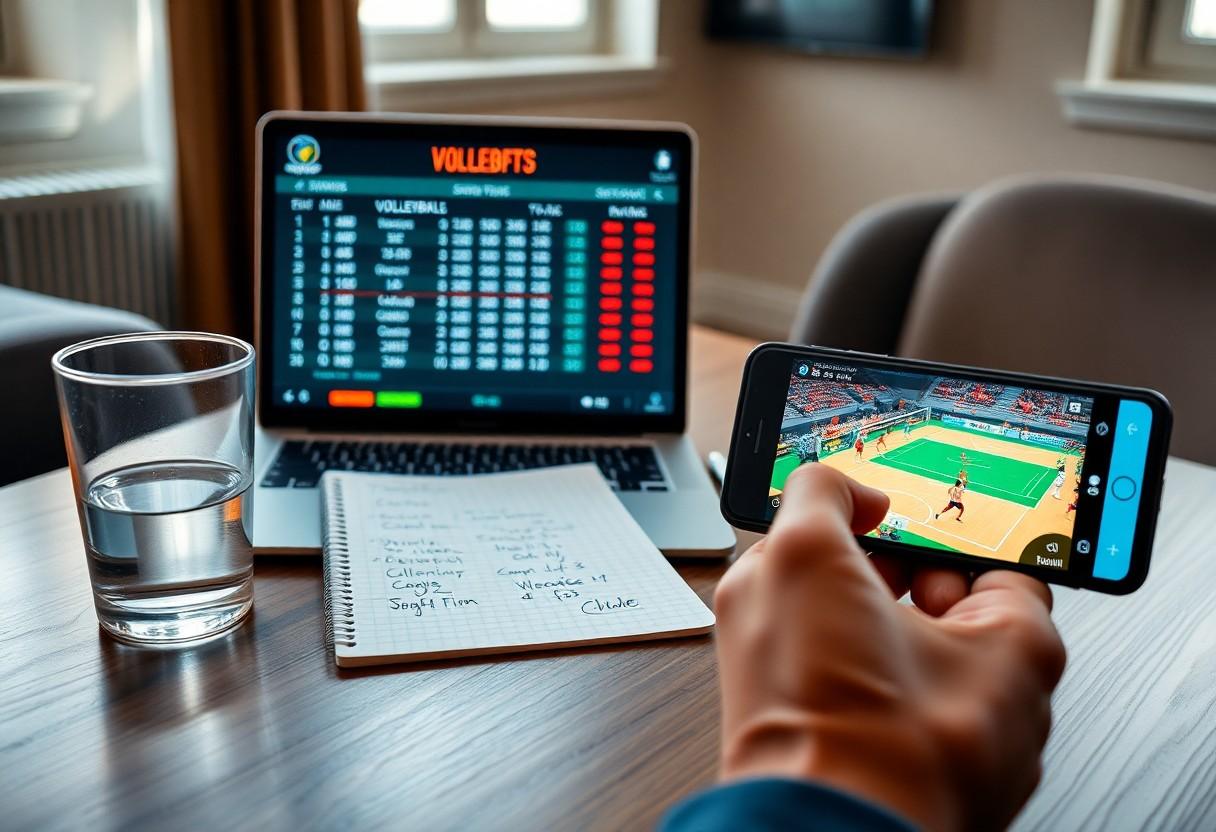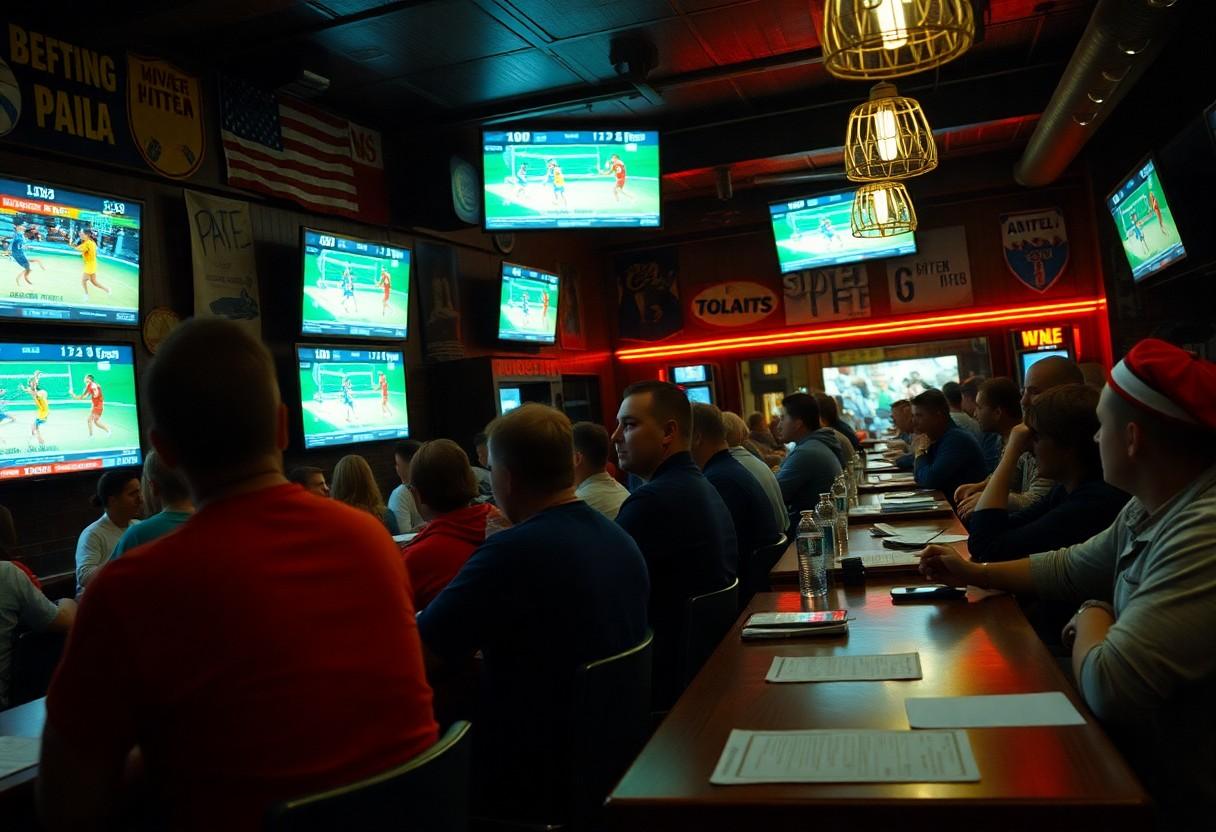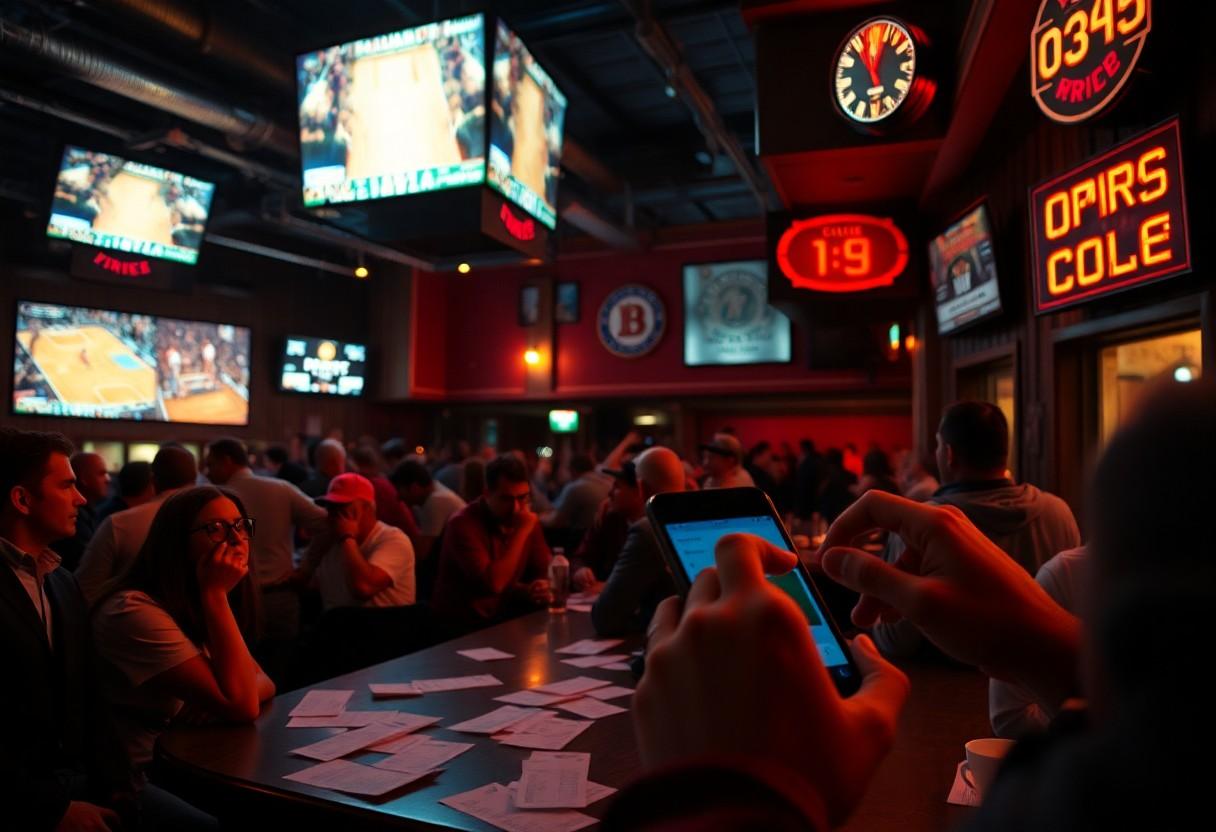There’s live betting that demands discipline: manage stake sizes, set stop-loss limits, and track results to protect capital; emphasize bankroll preservation against the high variance of in-play markets, adopt small, consistent units, and avoid emotional chasing so you stay in the game longer.
The Art of Live Betting: Risk and Reward
Live betting accelerates both opportunity and peril: odds shift within seconds, so disciplined bankroll management becomes non-negotiable. Traders often risk 1–3% of their roll on standard in-play plays, while pro scalpers keep exposure at under 1%. Volatility after events like red cards or substitutions can flip a market 20–30% in minutes, making chasing losses the fastest route to ruin and quick, measured sizing the clearest path to longevity.
The Thrill of Real-Time Decisions in live betting
Odds feeds update multiple times per second on exchanges and sportsbooks; successful in-play bettors convert those micro-moves into profit by acting on observable triggers—a coach change, momentum swings, or lineups. In soccer, a 70th-minute substitution can change win probability by 8–12%; in basketball, a 10–0 run alters live moneyline pricing dramatically. Fast traders predefine stake percentages and use limits to avoid overexposure during these high-adrenaline windows.
Balancing Emotion with Strategy in live betting
Design firm rules: cap single-live stakes at a set percentage (commonly 1–2%), enforce a daily loss ceiling (often 5–6%), and log every decision to spot tilt patterns. Players who reduce stakes by 50% after three consecutive losses protect capital and cognitive bandwidth. Strong discipline around stake caps and automated alerts prevents impulsive doubling down during volatile swings, turning instinct into repeatable edge preservation.
Operational steps to enforce that balance include pre-commitment devices—staking plans, automated bet sizing, and mandatory cool-downs (e.g., 30 minutes after three losses). Many pros run a performance dashboard and pause activity if variance metrics exceed thresholds; instituting a daily stop-loss of 6% and a rule to switch to observational mode for 24 hours after a tilt episode preserves bankroll and sharpness.
Mastering Your Funds: Core Principles of Bankroll Management for live betting
For live betting, separate a dedicated bankroll and treat it like a trading account: define unit size, session stop-loss, and a reserve to exploit mispriced in-play lines. Many pros use a 100-unit baseline, a session cap of ~20% drawdown, and never stake more than a small, predefined percentage per opportunity to survive variance.
Establishing a Betting Bankroll for live betting
Allocate only money you can afford to lose and convert it into units—for example, $1,000 becomes 100 units of $10. Keep the bankroll in a separate account or e‑wallet and log every in-play stake in a spreadsheet or app. Set explicit rules: daily loss limit (e.g., 5% of bankroll), session stop at 20% drawdown, and pause after streaks to prevent emotional escalation and overexposure to volatile markets.
Setting Unit Sizes for Your Bets in live betting
Choose unit size based on risk tolerance: conservative = 1% per bet, moderate = 2%, aggressive = 3%. With a $2,000 bankroll that translates to $20–$60 units. Flat-unit betting lowers variance; percentage-based units adapt to bankroll swings. Prefer smaller units on markets with rapid line movement or low liquidity to avoid ruin from a few bad fills.
Use fractional approaches when you can estimate edge: half-Kelly can suggest larger stakes but demands reliable probability estimates, rarely available in fast-moving live betting. Practical rule: reduce units when volatility spikes or after three straight losses, and increase only after consistent profit (e.g., +20% bankroll). Track ROI per market and adjust unit allocation by market (soccer live vs. basketball live) to reflect differing volatility and edge.
Strategies for Sustainable Live Betting Success
Live betting demands disciplined staking: adopt a flat or percentage-based plan (commonly 1–2% per standard live bet), set per-day loss limits and profit targets, and log every trade to track edge.
The Importance of Selective Betting
Prioritize opportunities where your in-play model or reading of the match gives a clear edge: reject bets with tiny expected-value gaps and focus on moments like a favored team conceding a soft goal or a red card inside 20 minutes. Target selections where market mispricing exceeds 3–5% expected value, and skip low-liquidity micro-markets that often carry hidden vig and higher variance.
Adapting Your Strategy to In-Play Dynamics in live betting
Watch concrete triggers—substitutions, cards, weather shifts—and reduce stakes when variance spikes; for example, cut target stake to 0.5–1% after a red card until lines stabilize. Use live stats (possession, shots on target, xG momentum) to quantify shifts: a 15-minute xG swing of 0.25 often precedes meaningful odds movement, creating value for disciplined bettors only.
Deeper tactics include probing with micro-stakes to test book reactions, automating alerts for key metrics (xG delta >0.2, expected line drift >10%), and employing hedges when cash-out offers underprice your edge—cash-outs often sit 3–7% below true fair value. A practical case: a team goes down 1–0 but retains 60% possession and three expected shots; backing the comeback with a reduced stake can exploit market reluctance to adjust immediately while protecting bankroll.
Navigating Common Pitfalls in Live Betting
In live betting, rapid odds swings and emotional reactions cause most losses; set fixed stake percentages — 1–3% per play — and predefine session stop-losses at 5–10% of your bankroll.
Avoiding Chasing Losses in Live Betting
After a loss, avoid immediate stake increases; limit recovery attempts to no more than 2x your base stake and allow a forced cool-down of at least 30 minutes. Track streaks: if you hit three losing plays or lose >5% of session bankroll, stop. Example: a $2,000 bankroll with a 2% base stake ($40) should cap any chase at $80 and then reassess.
Recognizing When to Walk Away from Live Betting
Signal thresholds include fatigue, concentration drops, or repeated rule breaches; mark these as automatic exits. Set a daily loss cap (e.g., 5% of bankroll) and a time cap (e.g., 3 hours of active live betting). If reaction times slow or you bet outside pre-set models twice in a session, walk away and log the session.
Psychological signs predict escalation: chasing momentum swings, overvaluing single-event intuition, or ignoring implied probability. Use a checklist—sleep quality, recent alcohol, stress level, and event volatility—and pause if two items flag. Research indicates decision accuracy can drop ~20% under cognitive fatigue; enforcing a cool-down and routine review preserves bankroll and performance.
Leveraging Data: The Role of Statistics in Live Betting
In live betting the speed of data decides profitability: feeds update every 1–5 seconds, and models must re-price after goals, cards, or possession swings. Historical in-play models show edges evaporate within minutes, so prioritize markets where you can act on clear model-versus-odds edges ≥3%.
Using Real-Time Data to Inform Bets
Combine live metrics—possession sequences, expected goals (xG), shot quality, and pressure events—with market odds to compute a running win probability. Convert odds to implied probability and place bets when your model shows a 3–5% advantage; re-evaluate after every shot, substitution, or red card. Avoid thin markets where slippage and stale quotes can wipe out theoretical edges.
Tools and Resources for Informed Betting Decisions
Feeds like Opta and StatsBomb, public trackers such as SofaScore and Flashscore, and exchanges like Betfair supply microstats, price movement, and depth. Use trading platforms (Bet Angel, Geeks Toy), APIs (OddsAPI), and live xG models to automate alerts and spot value. Prioritize sources with sub-second to 5-second latency and visible update timestamps.
Build a workflow: aggregate multiple feeds into a dashboard, backtest on historical in-play data, and set automated triggers—e.g., odds shifts >10% paired with xG per 10 minutes exceeding season baseline. Monitor liquidity thresholds before committing stakes and use alerts to act within the narrow windows where a verified edge exists; latency mismatches between your data and the bookmaker are often the single biggest risk to live profitability.
Summing up
On the whole live betting requires disciplined staking, quick limits, and strict loss caps; pair real-time discipline with solid bankroll management to preserve funds, set percentage-based stakes, and avoid impulsive chase bets, so you stay in the game longer and make smarter in-play choices.




